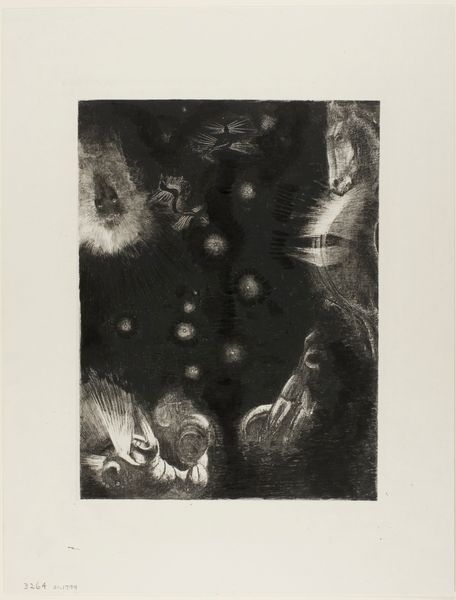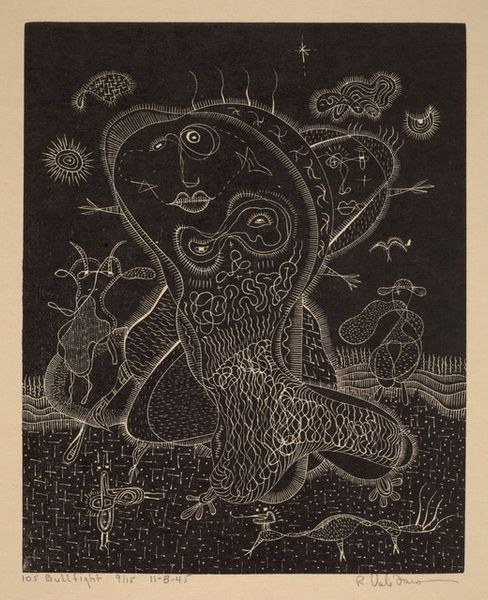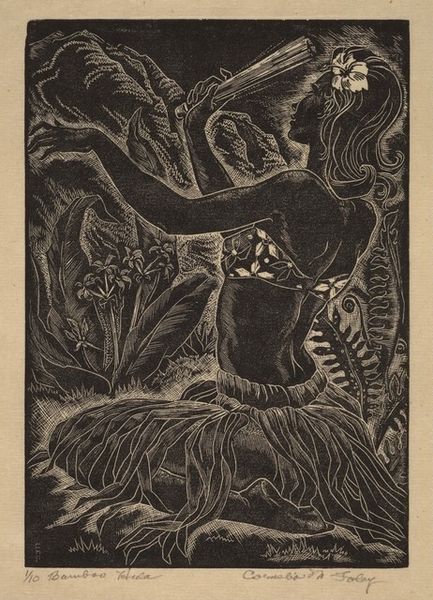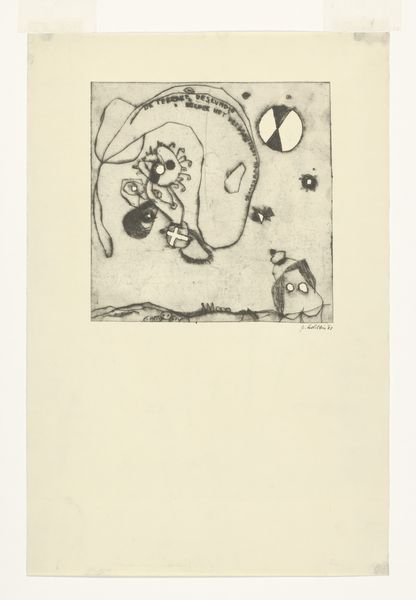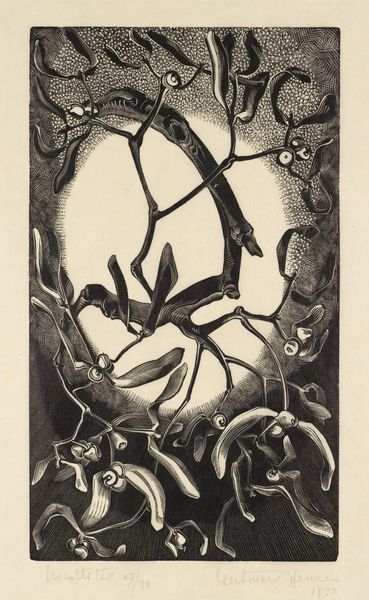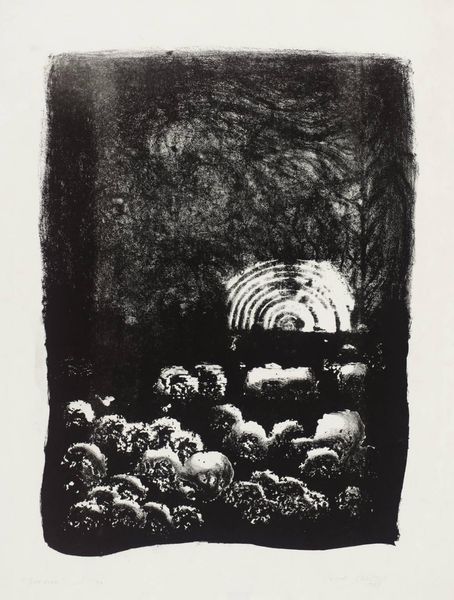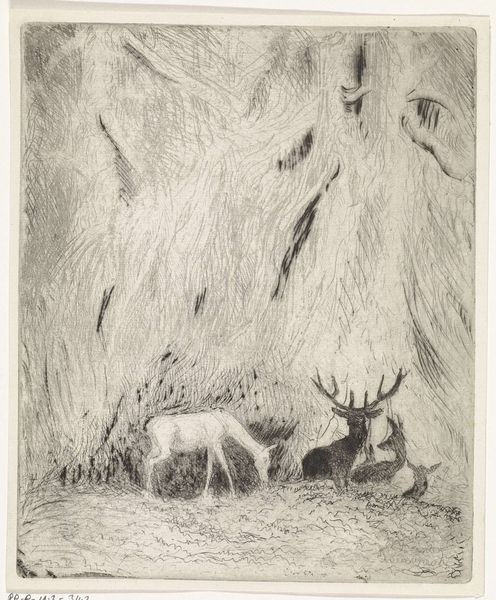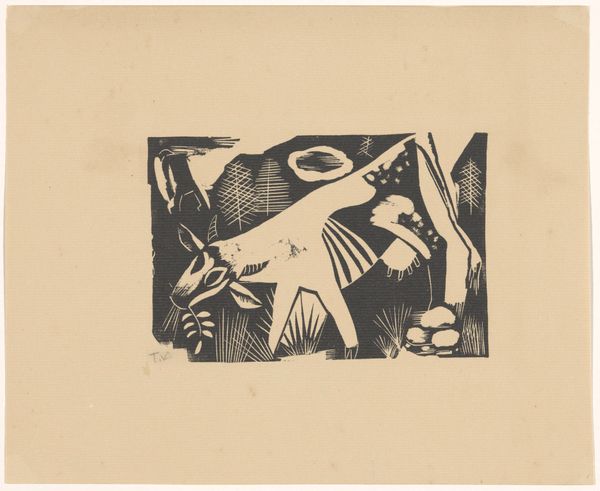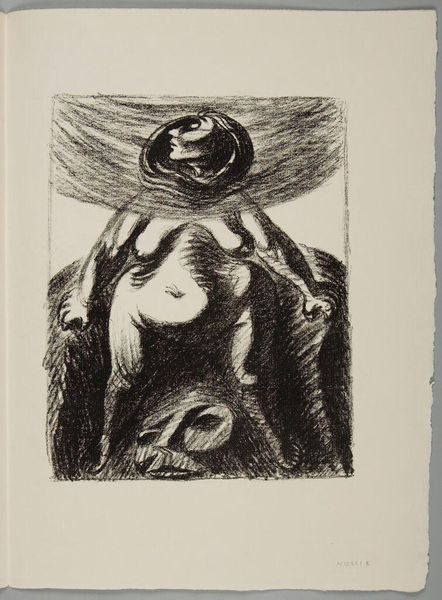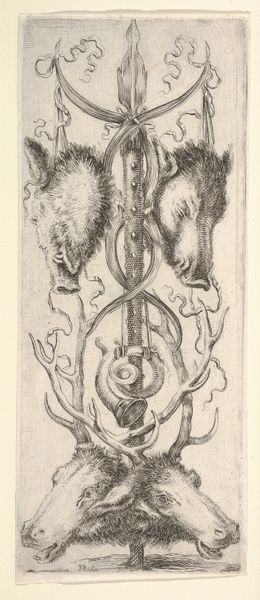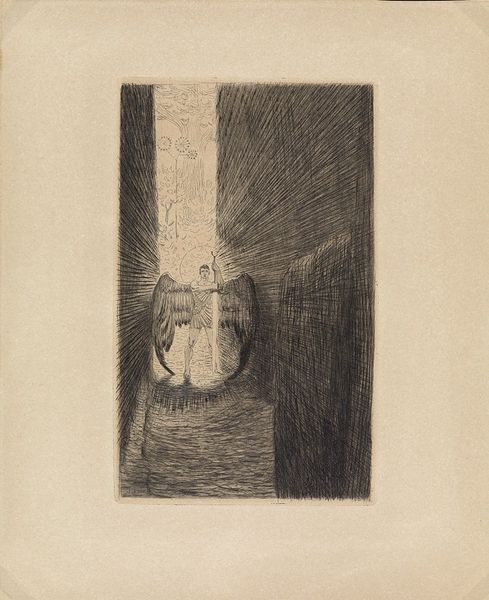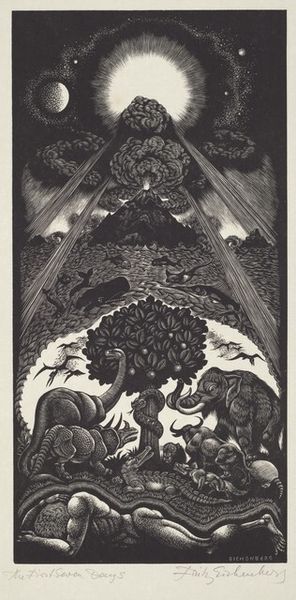
drawing, pencil
#
portrait
#
drawing
#
figuration
#
pencil drawing
#
pen-ink sketch
#
pencil
#
surrealism
Copyright: Valentine Hugo,Fair Use
Curator: Valentine Hugo’s “Trial Proof for Rejected,” created in 1937, immediately strikes me with its unsettling yet intriguing composition. The meshing of feline and human features… it’s like a surrealist puzzle. Editor: I’m immediately drawn to the intricate layering of graphite. You can almost feel the pressure of the pencil on the paper. It makes me wonder about the material conditions of Surrealist artists. Graphite was easily accessible, but did that accessibility democratize art-making, or was there still a hierarchy in material preference? Curator: That's an interesting point. Considering Hugo’s circles, her engagement with André Breton and the broader Surrealist movement, it would seem there was a certain freedom to experiment with diverse materials. This "Rejected" work suggests a challenging of conventional expectations both artistically and perhaps, personally. I see a rejection of the established patriarchal order. Editor: I see that too, the composition does have this jarring yet playful push and pull. I am captivated by the faces that make up the cat’s eyes. They add to this dynamic between light and dark. It’s striking that Hugo, known for her automatic drawings, invested such controlled labor into a piece meant to evoke the subconscious. The layering seems quite deliberate, countering the spontaneous mark-making usually linked to surrealism. Curator: True. There's this undeniable sense of meticulous planning here, almost betraying the supposed spontaneity. Perhaps the 'trial proof' status hints at her struggle to reconcile her vision with the accepted standards of the time. Given Surrealism's fascination with dreams, could the streetlights represent artificial illumination, obscuring true vision? And that could also suggest this imposed societal construct or pressures that contributed to feeling "rejected”. Editor: That's a compelling read. And if you look closely, it's also worth asking, who exactly, is doing the rejecting here? Is the animal the thing that society refuses to see or accept about us? Also, consider how the means of artistic production was being changed during the early to mid 20th century by mass-produced images. The pen and ink was also used for commercial imagery so the distinction between “high” and “low” art could have factored into her work. Curator: Ultimately, this image confronts us with its unsettling, perhaps deliberately 'unmarketable,' quality. Perhaps Hugo anticipated and embraced the rejection, seeing it as a form of artistic rebellion against dominant artistic conventions. Editor: Right. Considering her work’s complexities around the ideas of “rejection,” examining its materiality encourages reflection about the broader scope in the artistic industry during that time.
Comments
No comments
Be the first to comment and join the conversation on the ultimate creative platform.
